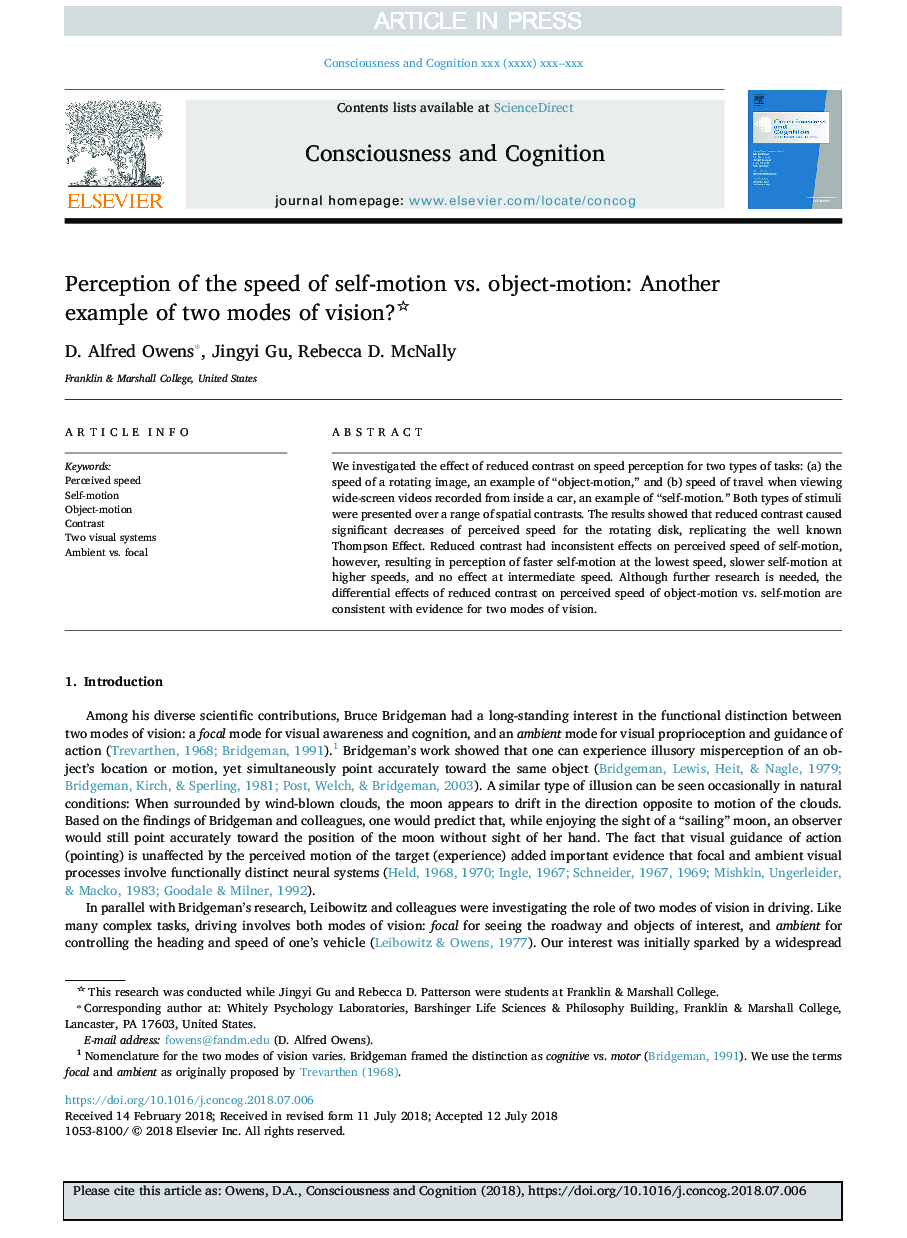| Article ID | Journal | Published Year | Pages | File Type |
|---|---|---|---|---|
| 10153418 | Consciousness and Cognition | 2018 | 11 Pages |
Abstract
We investigated the effect of reduced contrast on speed perception for two types of tasks: (a) the speed of a rotating image, an example of “object-motion,” and (b) speed of travel when viewing wide-screen videos recorded from inside a car, an example of “self-motion.” Both types of stimuli were presented over a range of spatial contrasts. The results showed that reduced contrast caused significant decreases of perceived speed for the rotating disk, replicating the well known Thompson Effect. Reduced contrast had inconsistent effects on perceived speed of self-motion, however, resulting in perception of faster self-motion at the lowest speed, slower self-motion at higher speeds, and no effect at intermediate speed. Although further research is needed, the differential effects of reduced contrast on perceived speed of object-motion vs. self-motion are consistent with evidence for two modes of vision.
Related Topics
Life Sciences
Neuroscience
Cognitive Neuroscience
Authors
D. Alfred Owens, Jingyi Gu, Rebecca D. McNally,
